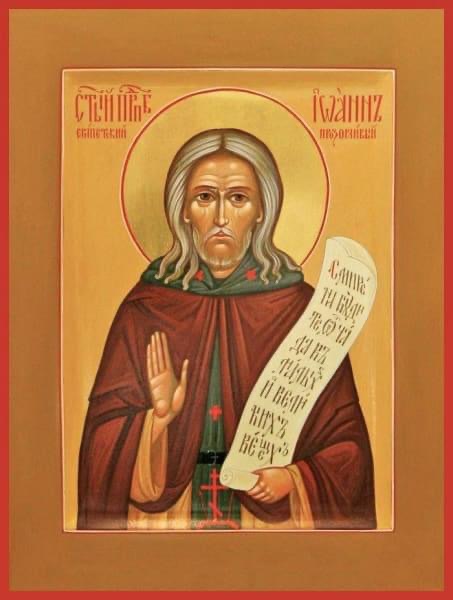
Today the church remembers a different carpenter from the ancient days: Saint John of Egypt, Wood Worker, Hermit, and Mystic.
Saint John of Egypt was born into a very poor family, not unlike the Jesus he so sought to emulate. He was trained as a wood worker (perhaps another connection to that wandering wonder in ancient Palestine), and at the age of twenty-five officially became a hermit after being trained by an unnamed ancient mystic who was following The Way.
The story goes that this ancient unnamed hermit ordered Saint John of Egypt to douse a wooden stick in water every day for a year, without explanation. One imagines this to be a test in obedience, not unlike Mr. Miagi and young Daniel from “The Karate Kid” (an underrated mystical movie). Would Saint John of Egypt keep up the task without explanation? What would happen at the end of the year?!
Well, at the end of the year this hermit took the stick Saint John had diligently wetted every day for a year and threw it away.
One hears this and recalls the words of that other ancient mystic Qoheleth who penned Ecclesiastes, “Vanity, vanity! Everything is vanity!”
Yet still, even when confronted with the futility of life, Saint John of Egypt chose the hermit’s life in the desert as the way to eek out his existence in the world. In fact, he mirrored his mentor’s seemingly odd acts in life and took them on as his own. He was known for carefully tending dead trees and for randomly moving large rocks from one location to another for no reason.
In the hills outside of Lycopolis, Egypt he created three caves: one for sleeping, one for working, and one for praying, and then walled himself into these adjoining caves, only allowing a small window to connect him to the outside world. Through this window he would receive food (only dried veggies and dried fruits, thank you) and would regularly preach to crowds and crowds of people.
From his small hermitage Saint John was said to do amazing things. He was said to be able to see into the future, seeing events that had yet to unfold (he foretold the victories of Theodosius the Great), and could heal people he had never met, appearing to them in visions and dreams. For this reason he was sometimes called, Saint John the Clairvoyant of Egypt.
Saint John of Egypt lived in this way, cut off from the outside world, for over fifty years, well into his 90’s. The last three days of his life were spent in prayer, and he was found by his devotees on this day in the late 4th Century in a prayerful position, having breathed his last.
Saint John of Egypt is kind of an odd duck, following in the footsteps of Saint John the Baptizer and the other desert mothers and fathers. These esthetes can sometimes cause people to pause and scratch their heads, which is kind of their point. They lived in such a way that people took notice, for better or for worse, and we must remember that they considered this way of life a voluntary calling.
Saint John of Egypt is a reminder for me, and should be for the whole church, that sometimes it’s important to live in such a way that people stop and take notice. It doesn’t have to be as extreme as Saint John here…but if your beliefs don’t change the way you live, the way you treat people, the way you extend your love, your hope, and your advocacy, well…
Why bother?
-historical bits from publicly accessed information
-icon written in traditional Orthodox style
